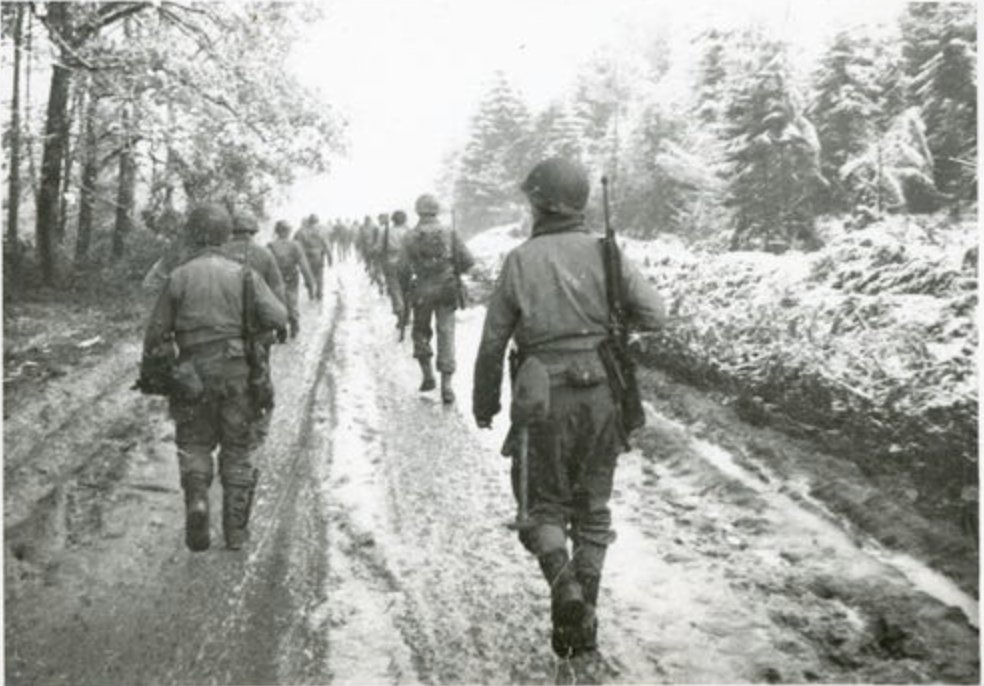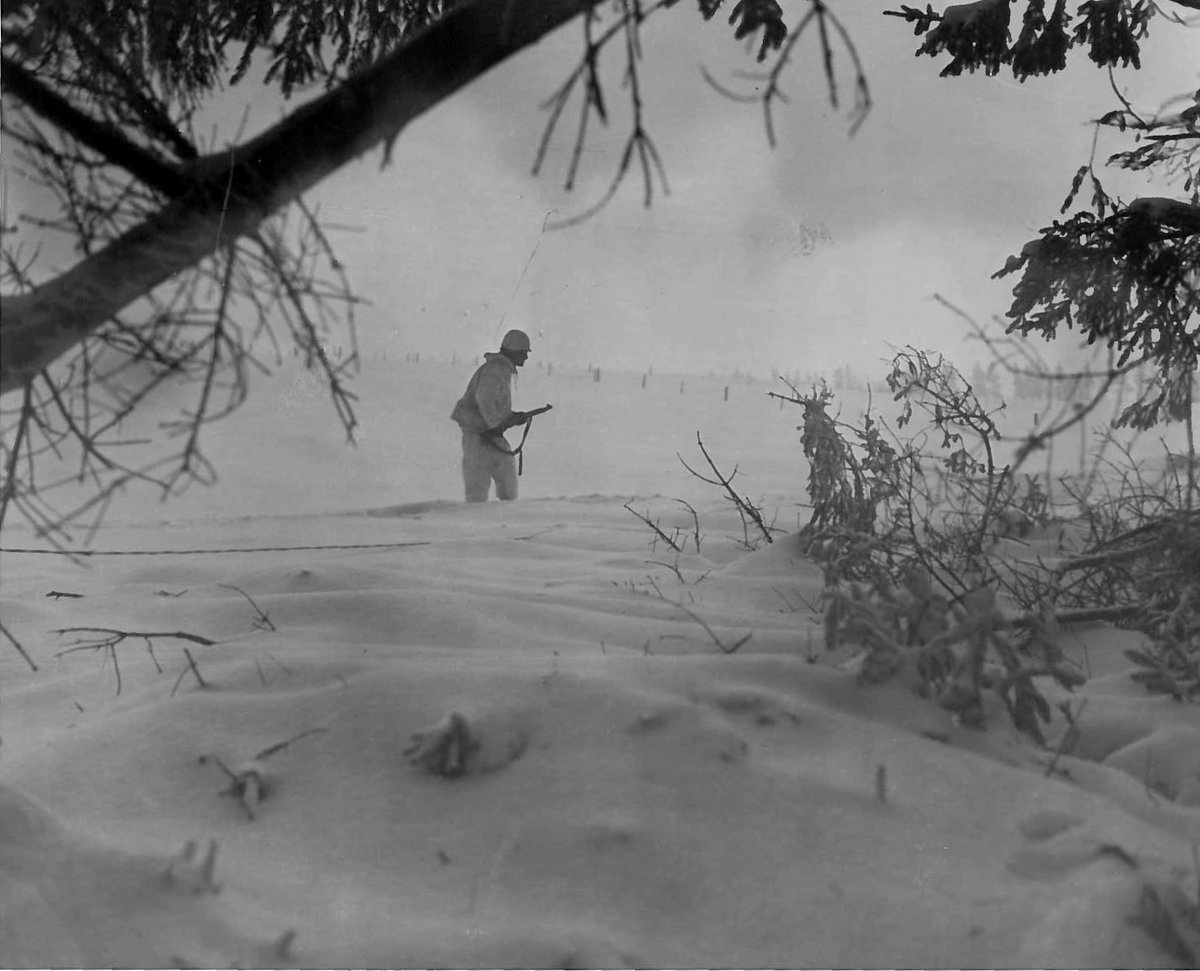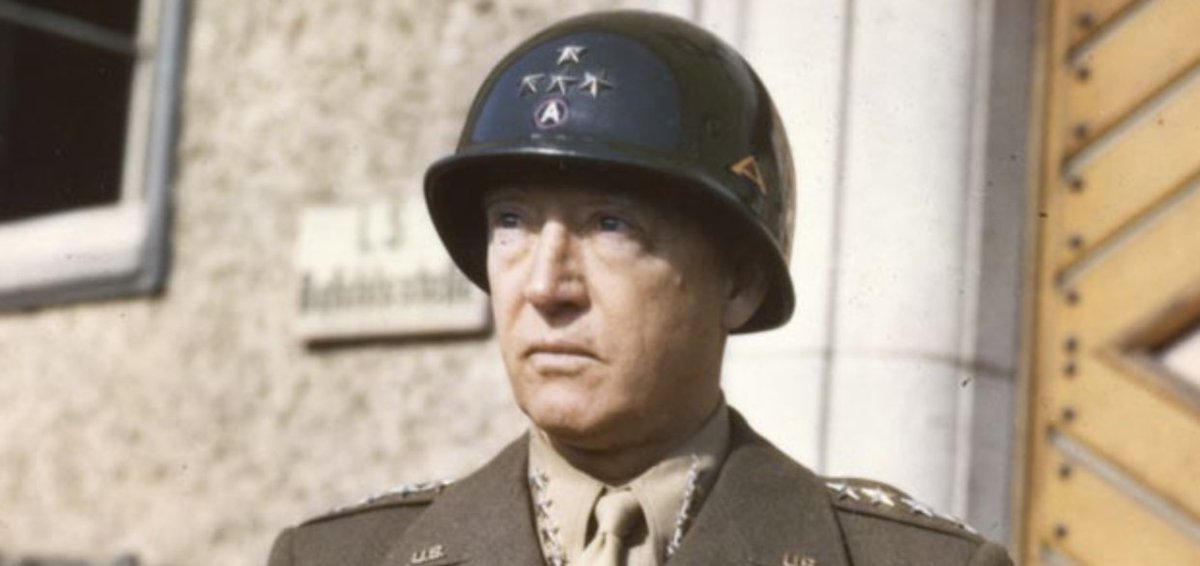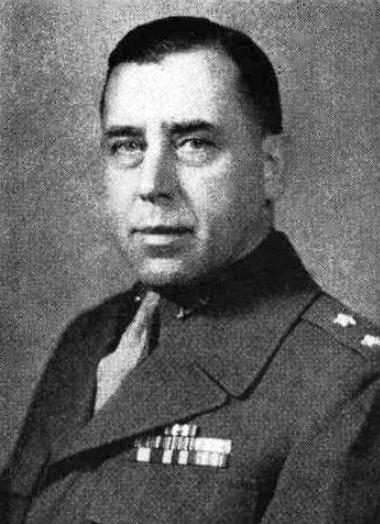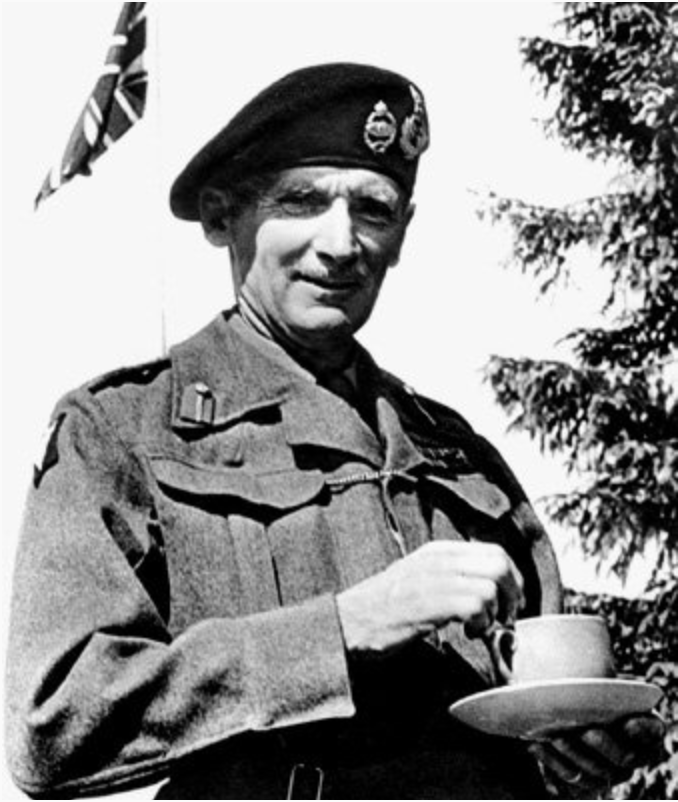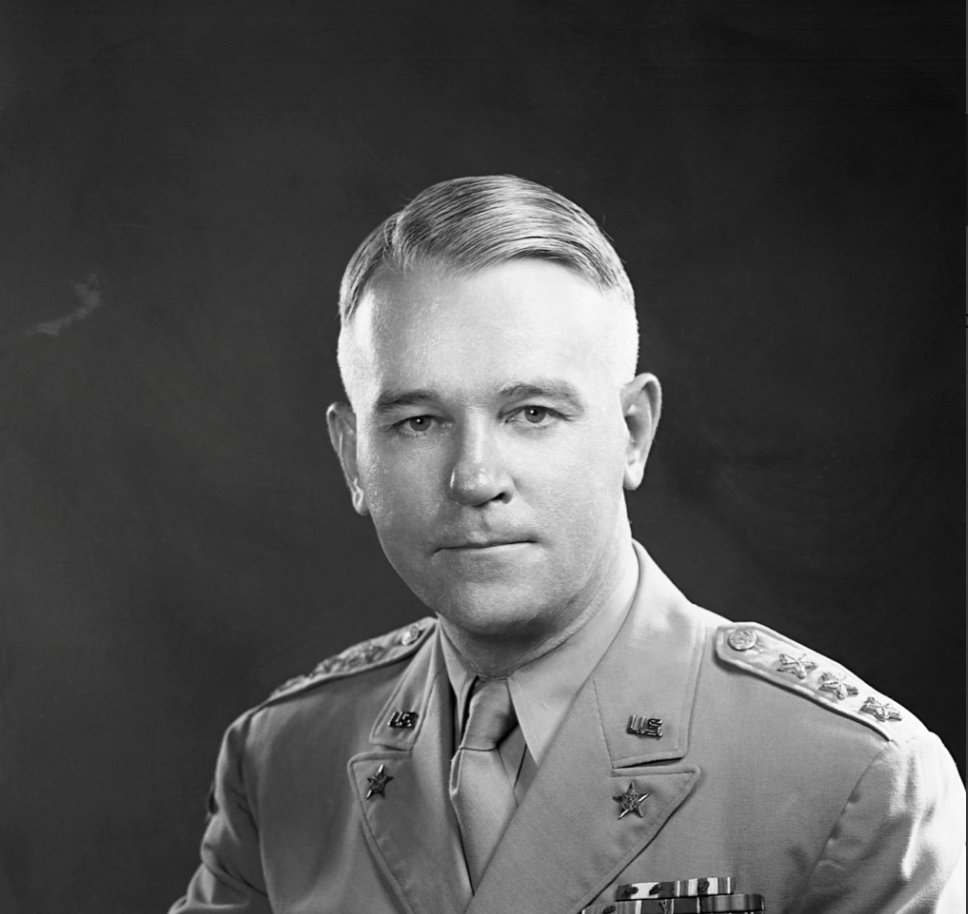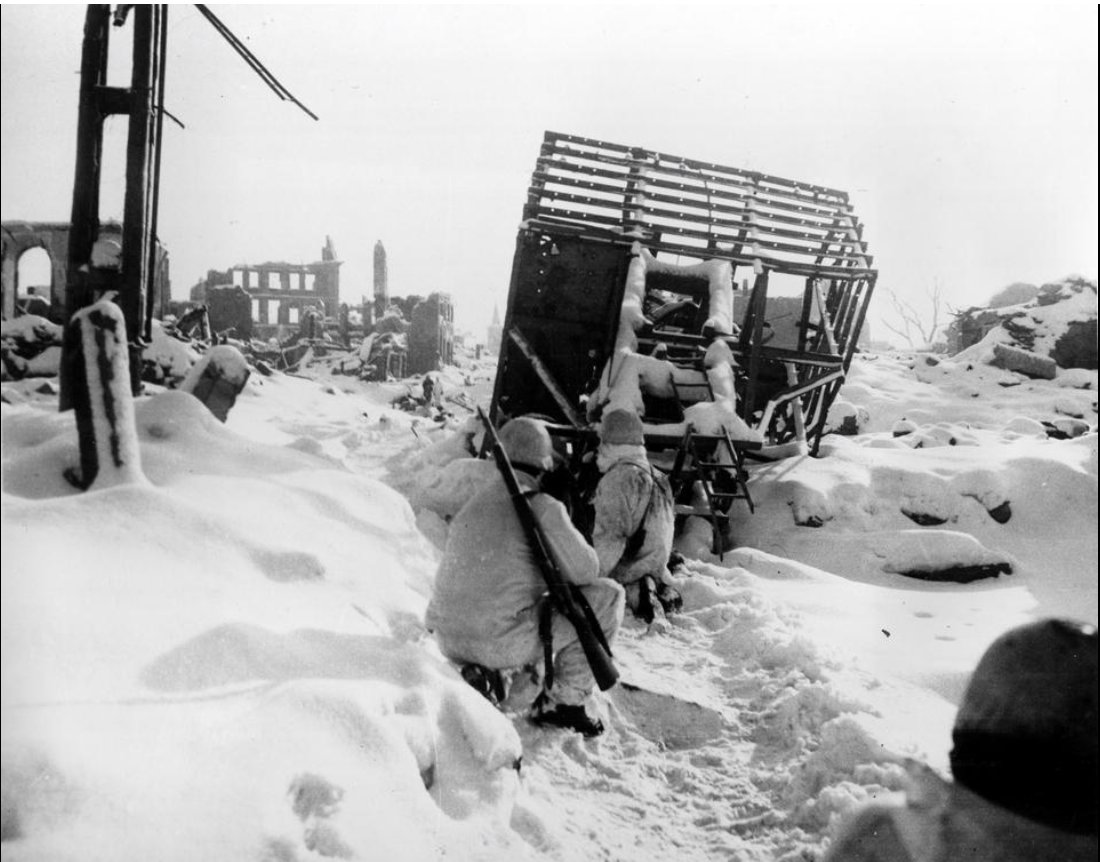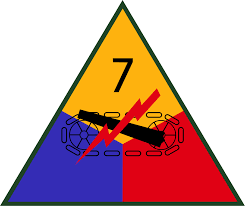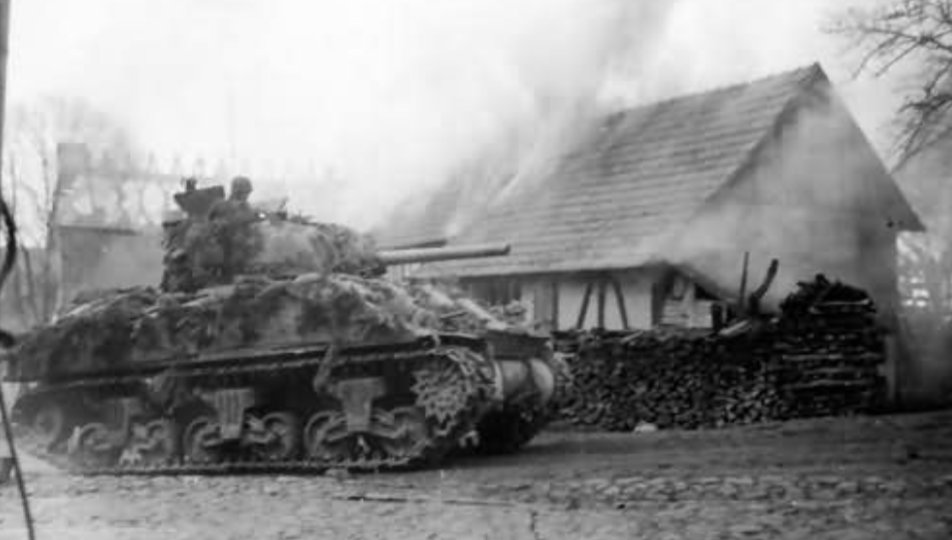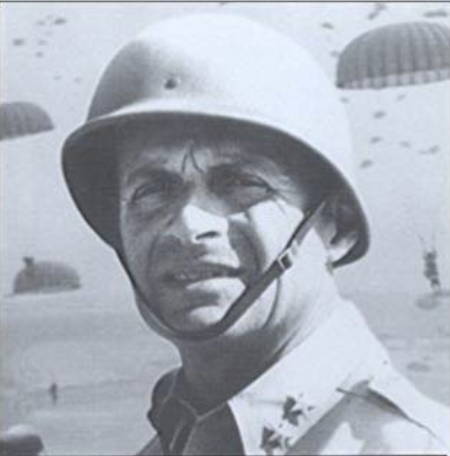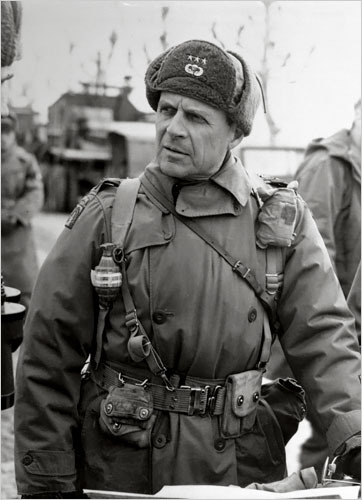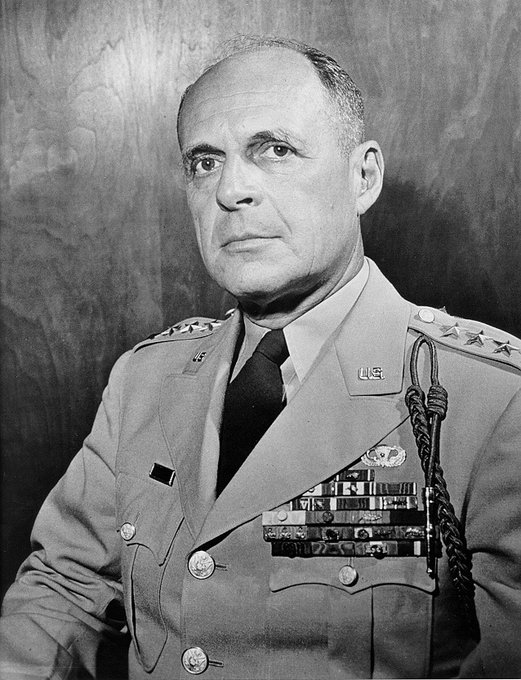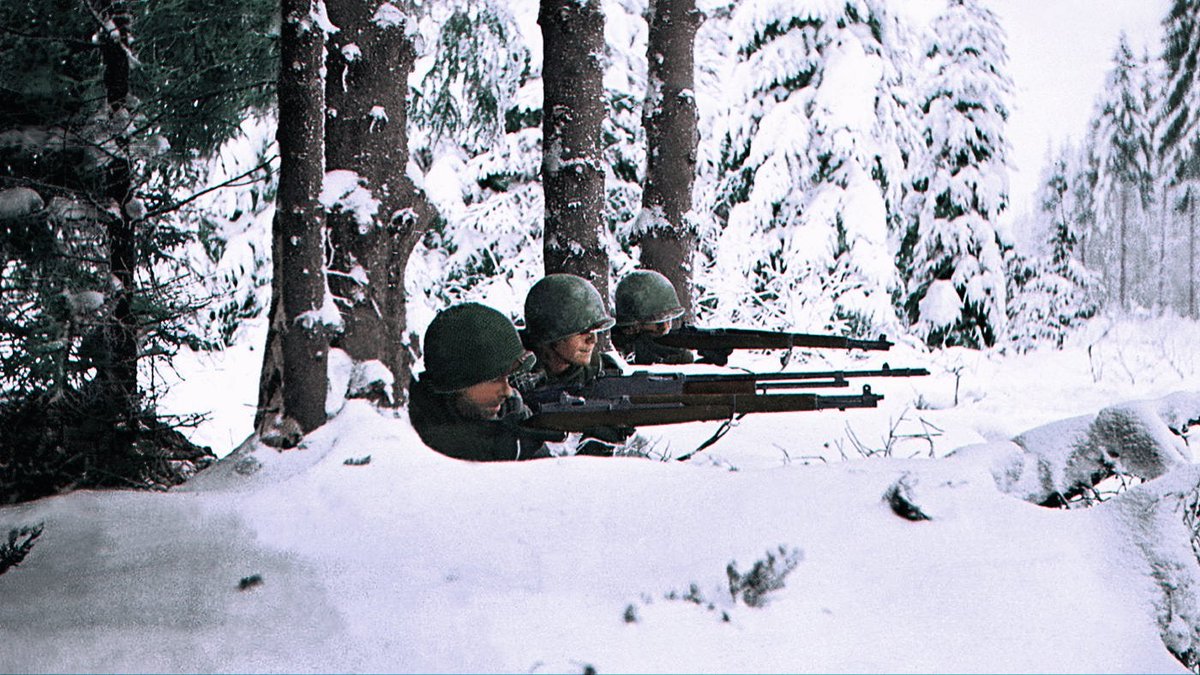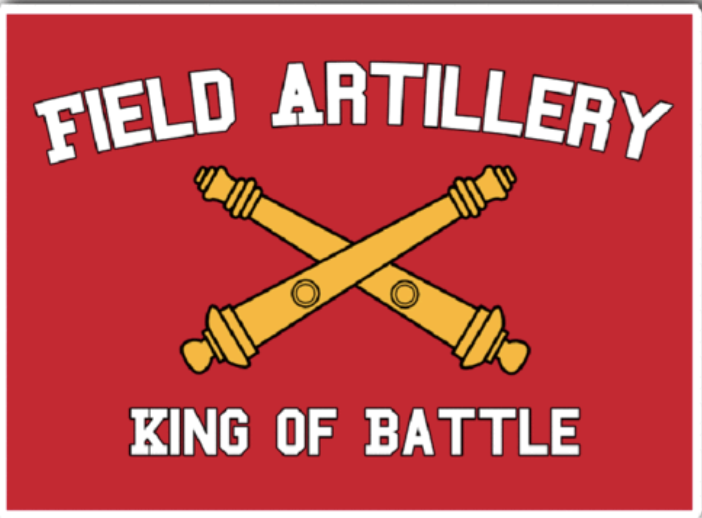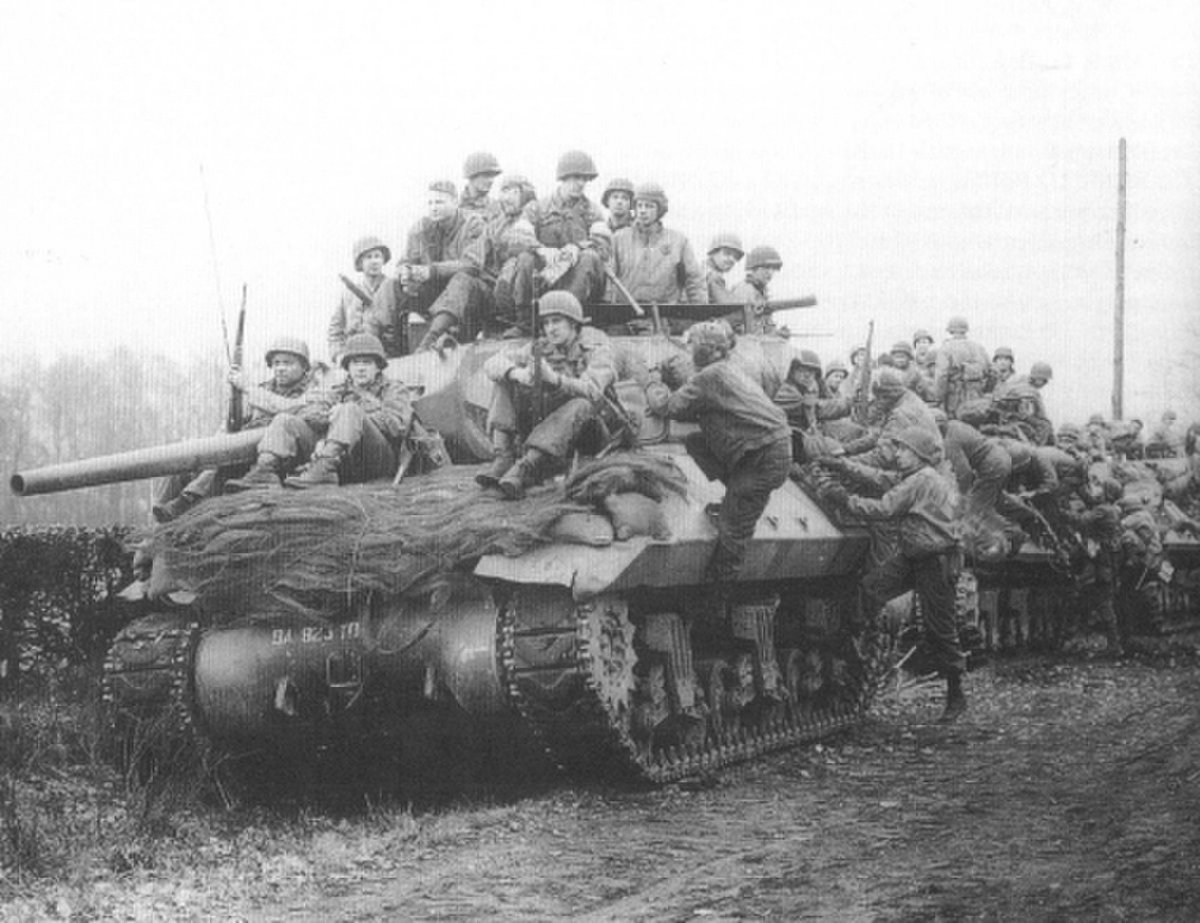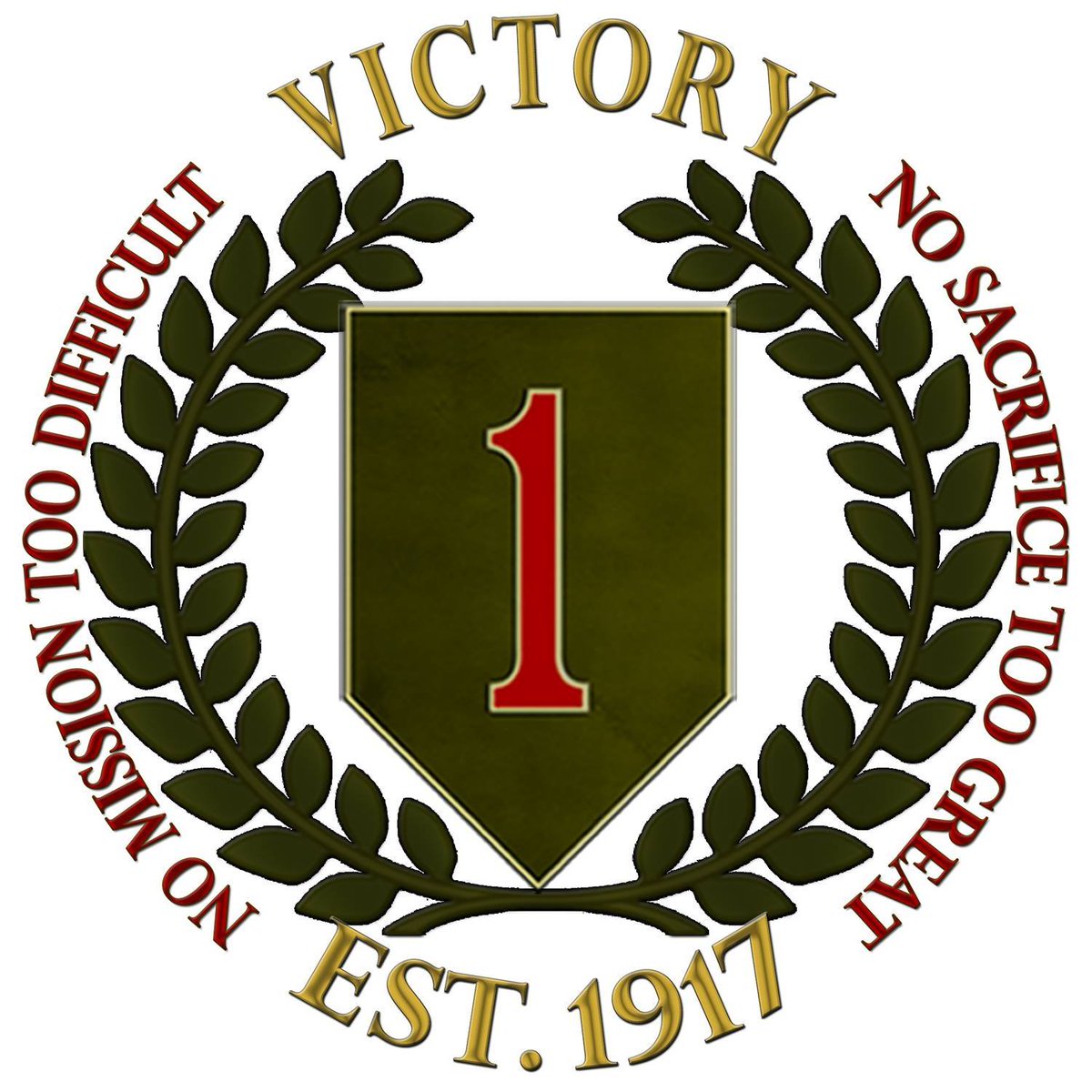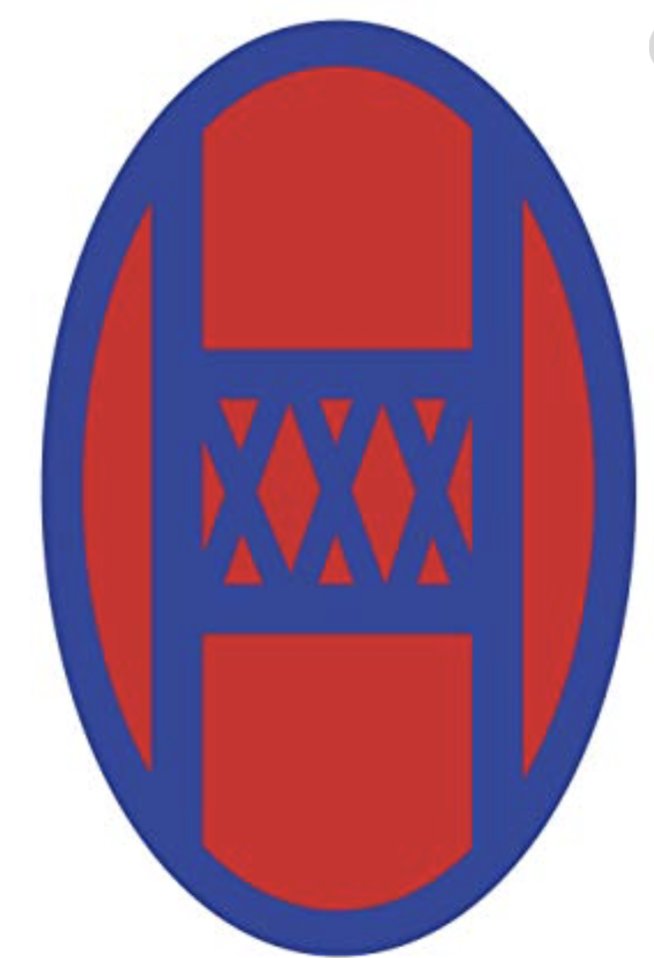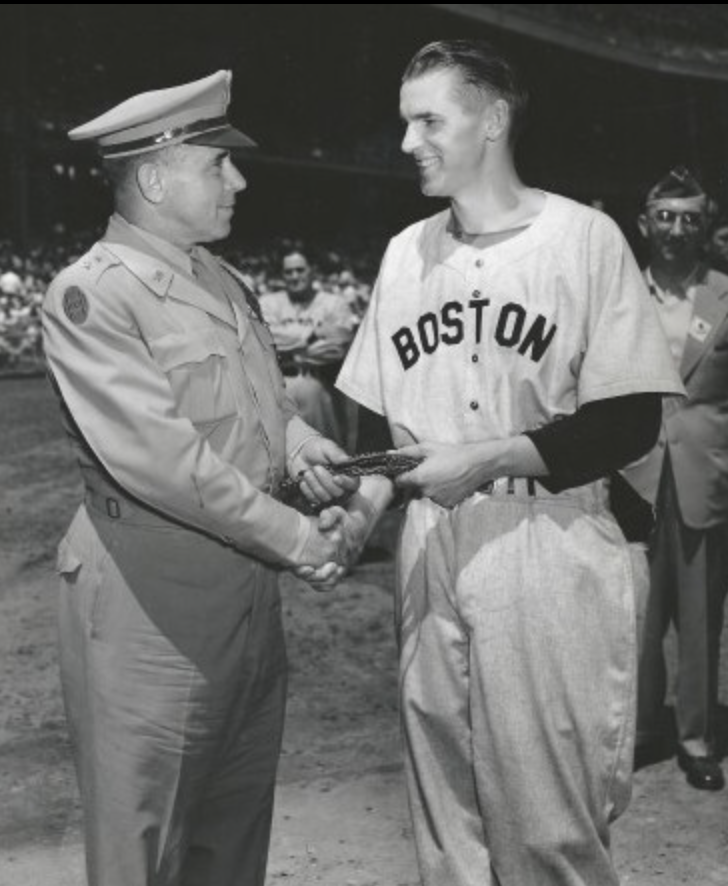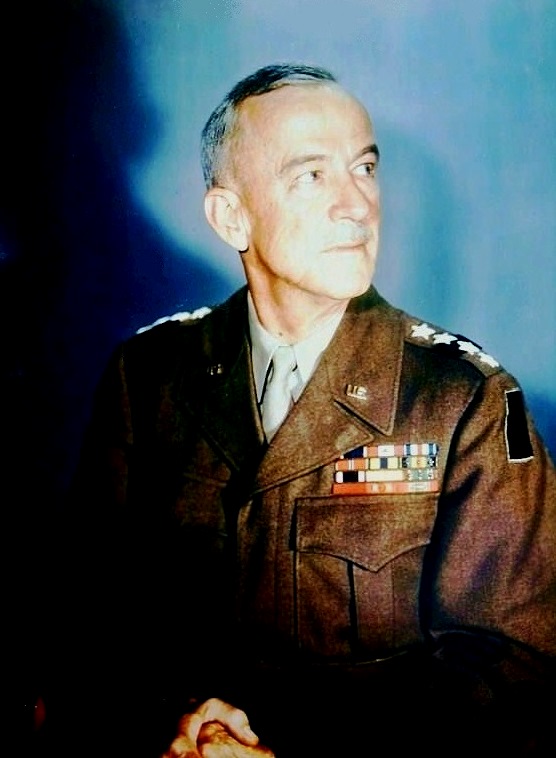[2 of 25]
By midday 75 years ago, all final Allied offensive actions were in motion.
[3 of 25]
So, to set the table, let's remember who is who here.
CAST OF CHARACTERS
In the South, Patton's 3rd Army is still slowly making its way northeast to Houffalize (remember, they've been making progress that way since Jan 3rd).
[4 of 25]
In the North, you've got
Robert Hasbrouck (commander of 7th Armored Division)
[5 of 25]
In the North, you've also got Leland Hobbs who commanded the 30th Infantry Division. Hobbs and Hasbrouck reported to...
[6 of 25]
Matthew Ridgway, commander of XVIII Airborne Corps, whop reported to...
[7 of 25]
Courtney Hodges, 1st Army Commander, who reported to...
[8 of 25]
Bernard Law Montgomery, the commander of all ground forces in the Northern part of the Bulge. [note the tea, Monty's cure for everything]
[9 of 25]
Final character: In the North, VII Corps, commanded by "Lightning Joe," J. Lawton Collins, was the main effort with Ridgway supporting.
Collins' VII Corps was to meet with Patton in Houffalize.
[10 of 25]
SCENE: The 18th Corps is to advance East toward St. Vith, which Ridgway saw as the decisive objective on the northern flank of the bulge. [For this operation, the green 75th ID replaced the tired 82nd ABN]
[11 of 25]
The plan calls for 7th AD to follow the
@FightingFirst (who is under V Corps control) & capture St. Vith.
[12 of 25]
Remember, 7th AD was forced to retreat from St. Vith on Dec 23 following a humiliating route at the hands of the German LXVI Corps led by General der Artillerie Walter Lucht
[13 of 25]
There are some hard feelings at the top of the chain. Hasbrouck (7th AD commander) and many of his subordinates felt that in December, Ridgway left them on the line at St. Vith entirely too long
[14 of 25]
Hasbrouck requested to withdraw on Dec 22nd; Ridgway would not allow it.
[By the way, MANY officers were critical of Ridgway, claiming he through troops into the wood chipper when they were no longer able to fight]
[15 of 25]
Hasbrouck also felt that Ridgway, whose WWII experience consisted entirely of commanding airborne forces, did not understand armored maneuver. [Hasbrouck had a point here]
[16 of 25]
Before movement, Ridgway called in his Division Commanders and gave them direct guidance: "Reconnaissance! Every single major error I've seen in has been attributed to failure to reconnoiter. It's nothing but Indian scout stuff!"
[17 of 25]
Ridgway wanted to ensure all understood that our forces were still outgunned by the German tanks. No force-on-force fights in open terrain. Use terrain/fog to mask movement and employ tank destroyers.
[18 of 25]
Ridgway's final point: this was not a level playing field, but our artillery would have to be the equalizer.
[19 of 25]
The push kicks off in the morning of January 13. It was a disappointing 1st day: 30th ID (the lead element) only got ~ 3k yards due to ice, narrow roads, enemy fire.
[20 of 25]
This was a much slower pace than the planned & now the
@FightingFirst would not be able move into position.
[21 of 25]
Under the plan, the Big Red One would only commit once 30th ID made a deep penetration into St. Vith. By nightfall, the 30th Infantry Division just did not get far enough.
[22 of 25]
General Courtney Hodges, 1st Army Commander (Ridgway's boss) was furious. He drove to the 30th ID command post & tore into Gen Leland Hobbs, the division commander, in front of some of his subordinates. [This is Hobbs on the left]
[23 of 25]
You can see why Hodges is upset. This is a critical moment! We've got the enemy on the run, we cannot let him off the hook!
[24 of 25]
So let's continue with our story tomorrow and see if the 30th Infantry Division makes enough progress to allow the 1st Infantry Division to get into position.
We know how the Battle of the Bulge ends, but there is a great deal of drama in these final days.
[END]
Sources for this thread include memorandums Ridgway created to capture conversations with peers, superiors, & subordinates, a formal report of Ridgway's guidance to Division commanders, Ridgway's letter to Hodges, David Irving's "The War B/W the Generals" and these books.
